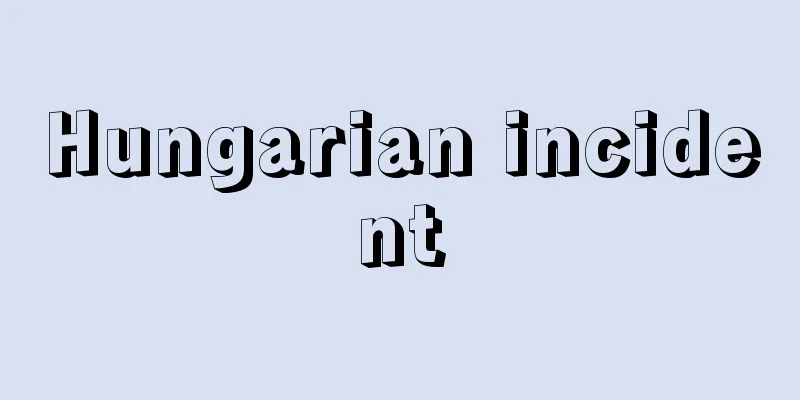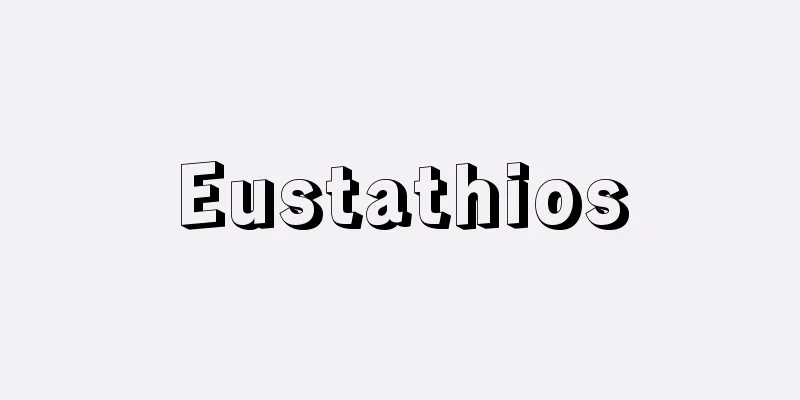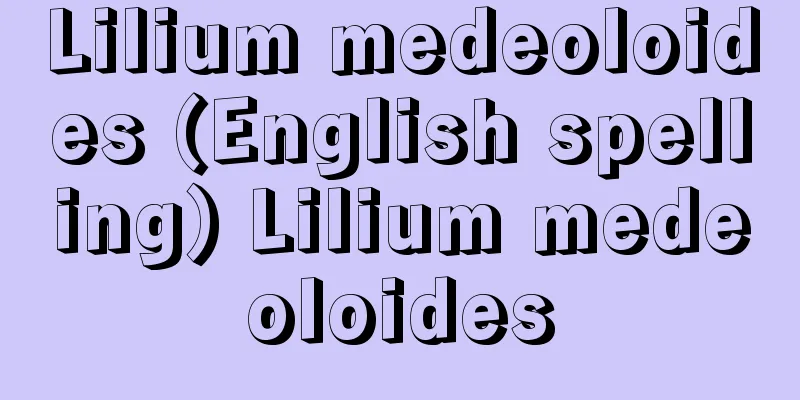Hungarian incident

|
Political upheaval in Hungary in 1956 calling for de-Stalinization. In 1948, during the anti-Tito campaign, the Rákosi faction began a major purge in Hungary. In addition, a Soviet-style self-sufficient economic system was pursued, leveraging progressive heavy industrialization and agricultural collectivization, placing great pressure on the lives of the people. Following Stalin's death in 1953, the liberal Imre Nagy emerged and attempted to correct the course, but in 1955 the Rákosi faction made a comeback and restored the old course. De-Stalinization began in 1956, but the party leadership was unable to come up with an effective response and its leadership weakened. Following the return of Gomulka in Poland, workers and students demonstrated on October 23, 1956, demanding the elimination of the Rákosi faction, the return of Nagy, and political freedom, beginning the so-called Hungarian incident. The demonstrations, which turned into riots, spread across the country, and on the night of the 23rd the party resolved to return Nagy to the position of Prime Minister, but at the same time First Secretary Gelley requested military intervention from the Soviet Union. The situation became chaotic and anti-Soviet. On the 27th, a new cabinet headed by Nagy, including leaders of the former Social Democratic Party, was formed, and Soviet troops began to withdraw. Under pressure from these developments, the situation progressed to the point where the multi-party system was restored and Poland withdrew from the Warsaw Pact. The Soviet Union, seeing the situation as having become counter-revolutionary, decided to intervene militarily on November 4th. Meanwhile, in response to the Soviet movement, Kádar established a revolutionary workers' and peasants' government. The large-scale armed resistance was quickly put down, and 13 days of political unrest came to an end for the time being. However, the Kádar government, which had no domestic base at the time of its inception, had to contend with open resistance, albeit localized, and expressions of dissatisfaction, such as the formation of the Capital Workers' Council. However, this resistance was short-lived. The death toll from the incident reached several thousand, and nearly 200,000 people fled into exile. Nagy was captured and executed in 1958. This incident sparked an international debate on the merits of Soviet intervention. Many pro-Soviet Western intellectuals, including Sartre, took this opportunity to criticize the Soviet Union, and the Yugoslav leadership also recognized the anti-Stalin significance of the incident and once again came into conflict with the Soviet Union. On the other hand, China supported the Soviet Union from the standpoint of solidarity of the international communist movement against imperialism, and the Western communist parties also fell in line with this. The Italian Communist Party, which took the most polycentric stance, supported intervention but expressed a view closer to Yugoslavia. This debate itself appeared to be a confrontation between Stalinists and anti-Stalinists, but in the light of the subsequent development of socialism, this debate and the incident itself, along with the Polish coup of the same year, can be positioned as a struggle to explore various paths to de-Stalinization. Furthermore, in the case of Hungary alone, this incident can be said to have been a tragic attempt at de-Stalinization from below, which prepared the way for thorough de-Stalinization from above by the later Kádár regime. [Ieda Osamu] "Eastern Europe after Stalin, by Fate Ferenc, translated by Kumada Toru (1978, Iwanami Shoten)" ▽ "Eastern Europe in the Stalin Era, by Fate Ferenc, translated by Kumada Toru (1979, Iwanami Shoten) " ▽ "National Socialist Revolution - The Tragedy of Ten Years in Hungary, by Fate Ferenc, translated by Muramatsu, Hashimoto, and Shimizu (1957, Kindai Seikatsusha)" ▽ "On Communism, by Imre Nagy, translated by Oyamada and Arita (1958, Kagamiura Shobo)" ▽ "Moscow Diaries, by Veliko Michunovich, translated by Yamazaki Namiko (1980, Kobunsha)" Source: Shogakukan Encyclopedia Nipponica About Encyclopedia Nipponica Information | Legend |
|
1956年にハンガリーで非スターリン化を求めて起きた政治的動乱。1948年反チトー・キャンペーンのなかでハンガリーではラーコシ派による大粛清が始まった。また、傾斜的重工業化と農業集団化をてことしたソ連型自給自足経済体制が追求され、国民生活は大きく圧迫された。53年スターリンの死を機にリベラル派のナジ・イムレが登場し、軌道修正が図られたが、55年にラーコシ派の巻き返しで旧路線が復活した。56年に非スターリン化が始まるが、党指導部は有効な対応策を打ち出せずに指導力を弱めた。ポーランドでのゴムルカ復活を機に、56年10月23日、ラーコシ派の一掃、ナジの復活、政治的自由などを要求して労働者・学生のデモが行われ、いわゆるハンガリー事件が始まる。デモは暴動化の様相も伴って全土に広がり、23日夜にナジの首相復帰が党で決議されたが、第一書記のゲレーは同時にソ連に軍事介入を要請。事態は混乱し、反ソ的様相が色濃くなる。27日、旧社民党の指導者らを含むナジを首班とした新内閣が成立し、ソ連軍も撤退を開始。こうした情勢に押されて、事態は多党制復活、ワルシャワ条約機構脱退にまで進展。ソ連はここに至って事態が反革命化したとみて、11月4日に軍事介入を敢行する。他方、カーダールがこのソ連の動きに対応して革命的労農政府を樹立。大規模な武力的抵抗は短時間のうちに鎮圧され、13日間の政治的動乱はいちおうの終結をみた。もっとも、発足当初は国内的基礎をもたなかったカーダール政権は、局部的ではあるが表だった抵抗や首都労働者評議会結成などの不満の意思表示と闘わねばならなかった。しかし、こうした抵抗も短期間のうちに終息した。事件による死傷者は1万数千人に上り、さらに20万人近くの亡命者も出た。ナジは捕らえられ、58年に処刑された。 この事件は、ソ連介入の是非を中心に国際的論争を引き起こした。サルトルらの親ソ的西側知識人の多くはこれを契機にソ連批判に転じ、ユーゴスラビア首脳も事件の反スターリン的意義を評価してふたたびソ連と対立した。他方、中国は、帝国主義に対する国際共産主義運動の結束の立場からソ連支持に回り、西側共産党もこれに足並みをそろえた。もっとも多中心主義の立場をとっていたイタリア共産党は、介入を支持しつつもユーゴに近い見解を表明した。この論争自体はスターリン主義と反スターリン派の対立という様相を呈したが、その後の社会主義の展開からすれば、この論争も当の事件も、同年のポーランド政変とともに、非スターリン化におけるさまざまな道を探る抗争であったと位置づけることができ、またハンガリー一国に限れば、この事件は、後のカーダール体制による上からの徹底した非スターリン化を準備した、下からの非スターリン主義化の悲劇的試みであったといえる。 [家田 修] 『フェイト・フェレンツ著、熊田亨訳『スターリン以後の東欧』(1978・岩波書店)』▽『フェイト・フェレンツ著、熊田亨訳『スターリン時代の東欧』(1979・岩波書店)』▽『フェイト・フェレンツ著、村松・橋本・清水訳『民族社会主義革命――ハンガリア十年の悲劇』(1957・近代生活社)』▽『ナジ・イムレ著、小山田・有田訳『共産主義について』(1958・鏡浦書房)』▽『ヴェリコ・ミチューノヴィチ著、山崎那美子訳『モスクワ日記』(1980・恒文社)』 出典 小学館 日本大百科全書(ニッポニカ)日本大百科全書(ニッポニカ)について 情報 | 凡例 |
Recommend
Yoshihiro Onodera, the Zen Master
…A group of warriors from the Middle Ages. In the...
Campbell sunshine meter - Campbell sunshine meter
...An instrument for recording the hours of sunsh...
Mechanical brakes
A brake is a device that uses the force of fricti...
Penalty - Kachokin
(1) It refers to a monetary burden that the state ...
Drought damage
A general term for damage caused by droughts due t...
Voice production (English spelling)
The act of vibrating the vocal cords with exhaled...
Common Happiness - Kyodo no Koufuku
...Since ancient Greece, it has been one of the f...
Rhododendron albrechtii (English spelling) Rhododendronalbrechtii
…[Yoshiharu Iijima]. … *Some of the terminology t...
Cumulative Book Index
...In 1977, the Index Society was founded in the ...
Umm Kulthūm
1908‐75 Egyptian female singer. She learned tradit...
Thera-vāda (English spelling)
This was called the "Fundamental Schism"...
Iris - Iris
A general term for the genus Iris in the Iridacea...
Lockheed Scandal - Lockheed Scandal
The largest corruption case since World War II, i...
Kanaka tribe - Kanaka (English spelling)
Originally meaning "people" in Polynesia...
Thirty Years of Betrayal - Excerpts from the Hearings of the Committee on Un-American Activities 1938-68
...With the cooperation of informants, a blacklis...









